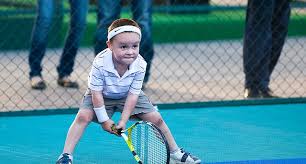How Much Is Enough – The Junior Golf Player Dilemma
Working in South Florida as a Sports Performance Specialist, I come across a lot of athletes who play their sport year-round. While this does have its obvious advantages…getting in a lot of practice, more options for competitive play, full time coaching, etc., the never slow down pace can be detrimental to the athlete’s physical health as well as their mental well-being. Tennis is a great example of a sport where year-round play is commonplace. The concept of more is better seems to be shared all too often by parents and coaches. While on a surface level this sounds like the right approach, when we look at the research, the reality is we might be doing more harm than good.
It is important to remember why our children got involved with the sport to begin with. It was fun! For the child to exceed at the sport long term it must stay fun to them! There is a fine line between motivating your child to stay disciplined to achieve the most out of their potential and becoming overbearing, forcing continuous play. Growing up I played golf in high school. I was not very good my freshman year averaging 46 for nine holes. My sophomore year I improved exponentially, averaging 39. Part of that was due to my father joining a country club over the summer. This obviously allowed me to play and practice more often. I should mention that I grew up in New Jersey, a state known for its high temperatures in the summers and low temperatures in the winter. This made playing and practicing from November till May nearly impossible as it was just too cold. As a result, I played other sports! By the end of my senior year I earned a scholarship to a division one school for golf. This was accomplished by only playing and practicing for half a year and without much coaching supervision. Yes, I worked hard, but I had other interests and because of the forced break due to the weather, I was able to become passionate again about the game every spring. This also kept me healthy as I never had to deal with overuse injuries. You would think my performance would suffer, however each summer I improved and won more and more tournaments. In fact, if you do the research you will see that the best athletes of today in all sports were multi-sport athletes up to the age of about 15.
You might be saying well tennis is different…you need to be playing all the time to get better. The competition is just too stiff. There was a study done in Poland taking over 1000 junior tennis players from over 40 countries and tracking them from 1994 to 2002. The average age was 12 to 13 years old. What they found was the better players as adults were smaller than average for their age, were less powerful, were faster and more agile, started playing tournaments at age 11 and only played about 45 to 50 singles matches per year. They also only practiced around 10 hours per week which was below average for the group. Some of the athletes documented in the study were Roger Federer, Kim Clijsters and many other notable tennis professionals. They also participated in more fitness sessions than their peers as juniors during the study. Their parents were supportive but not overly involved.
In another study done taking into account 1200 kids between years of 8 eight and 13, The researcher found that kids who spent more hours a week then their age at that one sport were 70% more likely to have a serious injury or burn out from the sport.
ITF recommendations:
9-11 yr olds: One hour a day, 3 to 4 times a week playing or practicing tennis. 70% of their time on tennis and 30% of their time on other sports.
12-14 yr olds: 2 to 3 hours a day, 4 to 5 times a week practicing or playing tennis with fitness included. 85% of their time on tennis and 15% of their time on other sports.
My recommendation would be to play multiple sports up until freshman year in high school and make sure to take time off throughout the calendar year…that means no tennis. We need to make sure the sport stays fun and that our children continue to play at a high-level while reducing the risk of injury by monitoring their hours each week.
